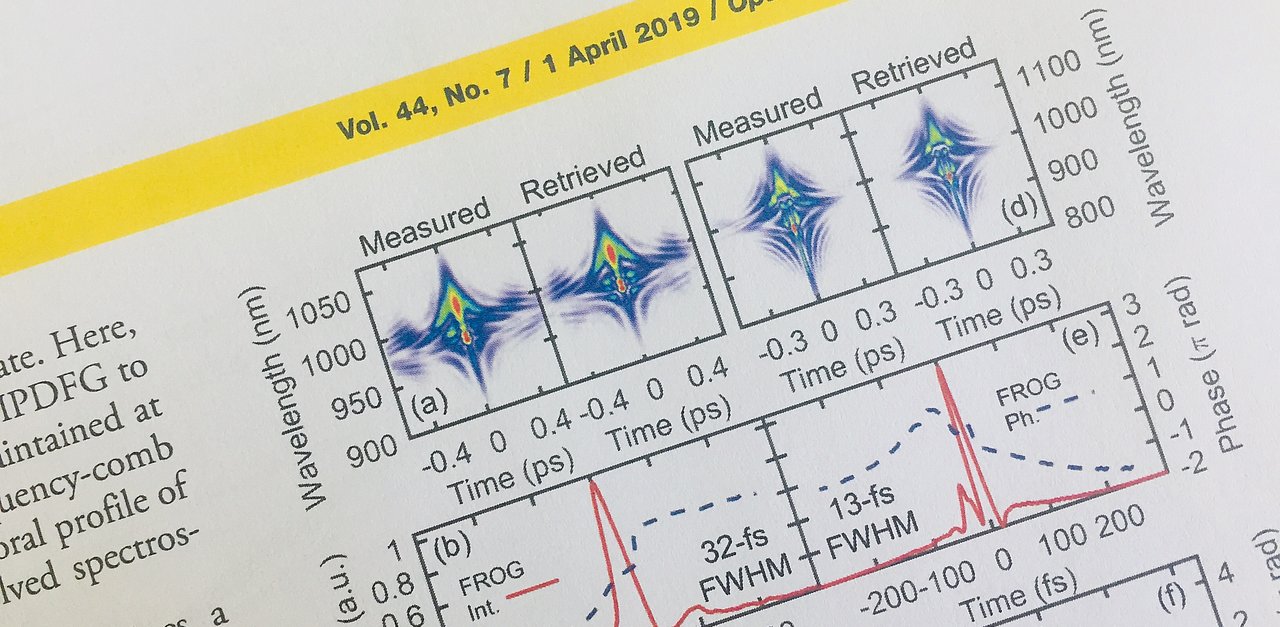Our team, together with collaborators from the Institute of Applied Physics at the University of Jena, has developed a laser light source for the generation and detection of ultrashort infrared pulses with an unprecedented combination of average power, spectral coverage and repetition rate. The new source, which is based on a thulium-doped fibre amplifier system, generates a 50-MHz-repetition-rate train of single-cycle mid-infrared pulses, encompassing almost two octaves (5 to 18 microns wavelength), with 0.5 Watts of average power. The coherent light exhibits an orders-of-magnitude higher brilliance than infrared beamlines at 3rd-generation synchrotrons, and is well suited to study the vibrational behaviour of molecules with high sensitivity.
In order to directly access dipole vibrations of a molecular sample, we have used electro-optic sampling, allowing for the complete reconstruction the oscillating electric field before and after the interaction of the infrared pulses with a molecular sample. This sensitive technique is demonstrated for the first time using a 2-micron laser, and is capable of simultaneous detection across the entire broad spectrum. By measuring the electric field directly, it was possible to characterise the temporal shape and duration of the excitation pulses, with a duration on the scale of a single electric field oscillation. By confining the excitation pulse to a short window, it is then possible to study the resonant vibrations of the molecules as they absorb and re-emit light. This next-generation laser frontend looks to open new opportunities in the early detection of disease markers via field-resolved infrared spectroscopy.

Figure: The main plot shows the measured electric field of the infrared pulse, both in the uncompressed state (red) and after compression to a single cycle duration (blue). The inset shows the spectral coverage, as well as a comparison to a modern synchrotron facility. Our new table-top mid-infrared light source shows orders of magnitude greater brilliance over nearly two octaves.
Original publication:
T.P. Butler, D. Gerz, C. Hofer, J. Xu, C. Gaida, T. Heuermann, M. Gebhardt, L. Vamos, W. Schweinberger, J. Gessner, T. Siefke, M. Heusinger, U.D. Zeitner, A. Apolonski, N. Karpowicz, J. Limpert, F. Krausz, I. Pupeza, “Watt-scale 50-MHz source of single-cycle waveform-stable pulses in the molecular fingerprint region,” Optics Letters 44, 1730 (2019)
